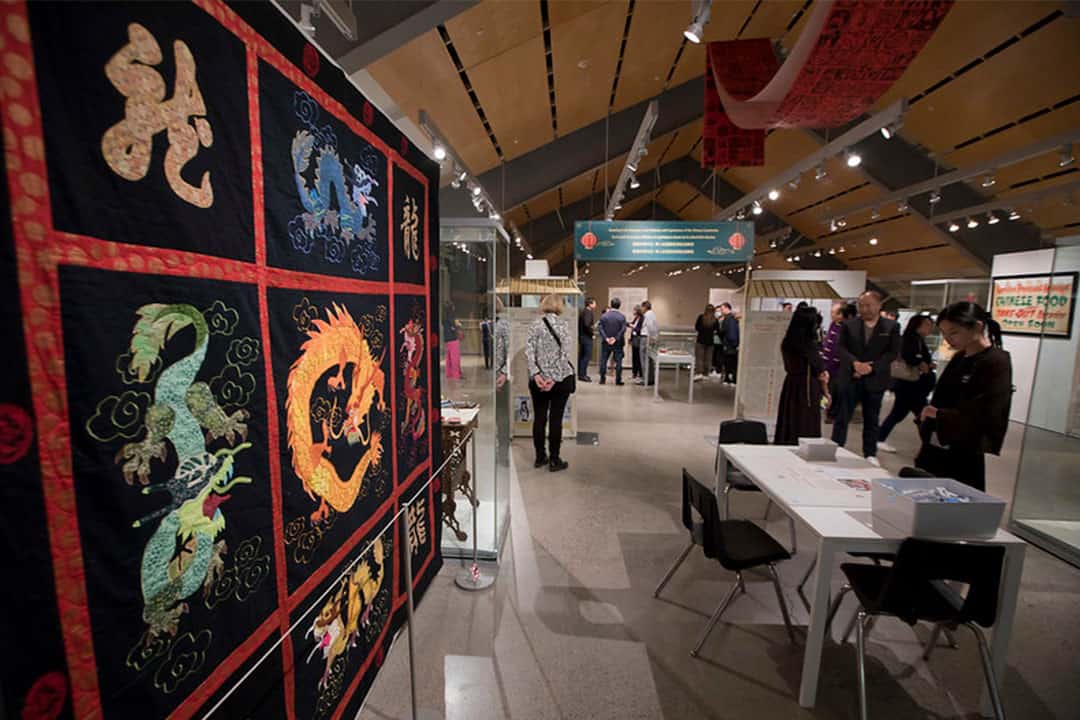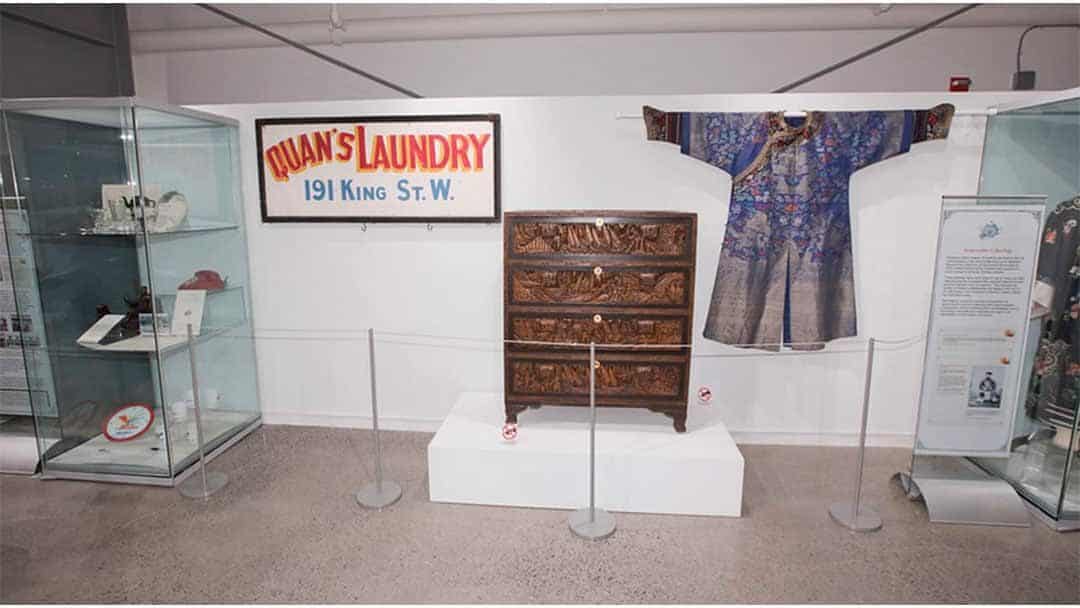2023 marks the 100th anniversary of the Chinese Exclusion Act, a law that aimed to systematically prevent Chinese immigration and economic inclusion in Canada.
Markham is home to a large Chinese diaspora population, and on the anniversary of the Chinese Exclusion Act, the Markham Museum opened its new exhibit Standing in the Doorway. The exhibit features cultural artifacts from Chinese Canadian communities in the region and is centred around a theme of resilience. The exhibit’s design included the efforts of several U of T Museum Studies students, and The Varsity spoke to some of the students involved about their work on the exhibit.
Abera Rajendran, who worked on the Standing in the Doorway exhibit as part of her capstone project for her Masters of Museum Studies, recalls not learning much about Chinese Canadian history in her time as a student under the Toronto District School Board. “It was rather fascinating how it was the 100th anniversary of something… we’ve never learned about,” she said.
In addition to Rajendran, fellow U of T alumni Grace Kovacs and Hanjia Li, as well as Master of Information and Museum Studies student Marie Song, also collaborated on the curation team. Although commemorating the Chinese Exclusion Act was the starting point for the Markham Museum, the team decided to focus the exhibit on present Chinese Canadian communities.
Many of the items on display in Markham Museum are sourced from the Chinese Canadian community in York Region. Additionally, the curation team helped collect oral stories from members of the Chinese Canadian community, from local leaders to students, about Chinese culture and experiences immigrating to and living in Canada.
Kovacs spoke to The Varsity about the importance of collecting oral histories. “In the Western tradition, people have put less emphasis on oral histories… but I think it’s important to realize that not everybody has the same access to having their stories written down,” she explained. “[As] we looked into our history books, we also didn’t find a lot about the Chinese community in Markham… so we had to rely on oral histories.”
But that doesn’t mean that they’re worth any less. According to Kovacs, oral histories are actually worth a lot more because they’re so personal. “I hope what the emphasis on oral histories does [in this exhibit] is validate them in an educational context,” she said.
While visitors may be drawn to the central paifang, the traditional-style Chinese gateway in the exhibit’s centre, the space is free-flowing and allows you to wander from display to display without directing you through a specific route. In an email to The Varsity, curators Rebekah Mitchell and Janet Reid noted that having a theme-based exhibition instead of a chronologically-based exhibition allowed for more leniency when they were designing the physical layout, which has proven especially useful when the exhibit travels across the York Region.
Mia Chen and Moyu Chen, second-year Master of Museum Studies students who interned at Markham Museum last summer, spoke to The Varsity about the considerations they put into planning the physical space, such as the placement of the banners for when the exhibit travels, the allocation of space for the flow of crowds and mobility devices, and the protection of the display items against sunlight damage.
The exhibit is designed to allow for interactive connections with Chinese Canadian culture. There is a craft table where people can cut and fold paper rabbits, dragon boats, and bats; visitors are invited to add their reflections to prompt questions on the wall, reinforcing the exhibit’s community-sourced and community-focused ethos; and people unable to visit in person can peruse the online exhibit, which, in addition to showcasing the various cultural items on display at the Markham Museum, goes more in-depth into Chinese Canadian history.
Hanging in the Markham Museum’s front atrium are two grand 40-feet long tapestries featuring a mosaic of designs by visual art students from Bur Oak Secondary School, who were tasked with interpreting what resilience meant to them in the context of the Chinese Canadian community. Resilience appears as a theme throughout the exhibit, from the interviews highlighting immigration stories to the in-person displays showcasing tenacious businesses. One example is the Quan family, whose original appliance store is still open 50 years later and has since opened multiple locations across the GTA.
When asked about why the curation team decided to make resilience a major theme, Kovacs said, “What I think museums want to do now is support the people they represent. And… the Markham community is such a lively, vibrant cultural centre. We want to show that in spite of all the hardship, the [Chinese Canadian] community has been resilient. More than that, they have flourished.”





No comments to display.